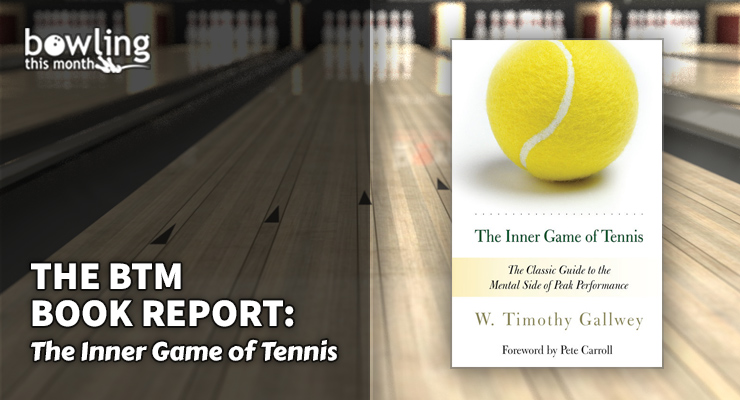W. Timothy Gallwey’s The Inner Game of Tennis is on the reading list for plenty of collegiate bowling teams, and it was even mentioned as the go-to mental book by Marshall Kent in BTM’s recent round table article. This month, we’ll discuss some of the many mental lessons in this book that can apply beyond the tennis court and onto the bowling lanes.
First, Gallwey introduces the concept of “Self 1” and “Self 2” and the battle between them when it comes to performance. Self 2 is the intuitive self that performs all the actions needed, while Self 1 is the controlling, judgmental part of you. Self 1 always wants to be in the driver’s seat, but to perform at your best, you need to let Self 2 take control and let Self 1 go.
One of the first key pieces of learning that can be transferred to bowlers is Gallwey’s “inner game” approach to learning or making changes to a player’s game. He realized that the typical way of learning through critique and verbal direction put Self 1 in charge of the learning, attempting to control movements. A more intuitive approach, and one used by toddlers and young children, is to visualize and imitate. Seeing the correct movement and visualizing it becomes the second step of the inner game learning process. Gallwey breaks down the learning steps in this way: observe existing behavior non-judgmentally; picture the desired outcome; let it happen—trust Self 2; non-judgemental observation of the results—continued learning.
Next, Gallwey’s discussion of focus goes into more detail than other books on the topic, offering practical advice on improving this skill. He argues that Self 1 needs something to do in order to keep it from interfering with Self 2’s performance. The best way to do this is to give it the task of focusing on something extremely specific, taking all its energy for this task. His examples include focusing on the seams on the tennis ball (rather than simply “watching the ball”) and becoming more complex to challenge Self 1 and keep it engaged while Self 2 performs.
One of the details mentioned in this section also relates to curiosity. Gallwey says, “Not assuming you already know, is a powerful principle of focus,” while describing his drill of watching and verbalizing when the ball bounces. When we assume we know, we lose focus, but by watching intently, Self 1 remains engaged more completely.
Finally, the book covers the games that athletes play, which aren’t the ones you see ...
This article is only available to Bowling This Month subscribers. Click below to get instant access to this article and all of our other premium instructional content.
Subscribe to Bowling This Month
Already a Bowling This Month subscriber? Click here to log in.
